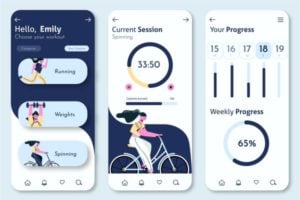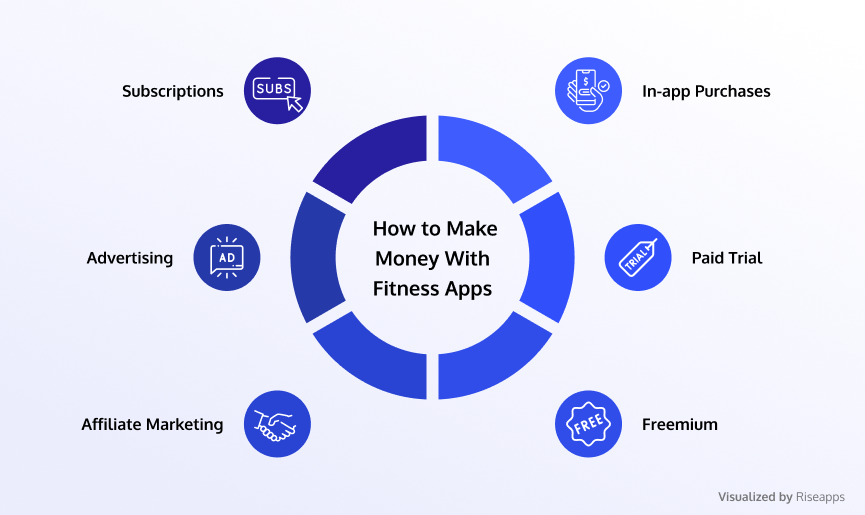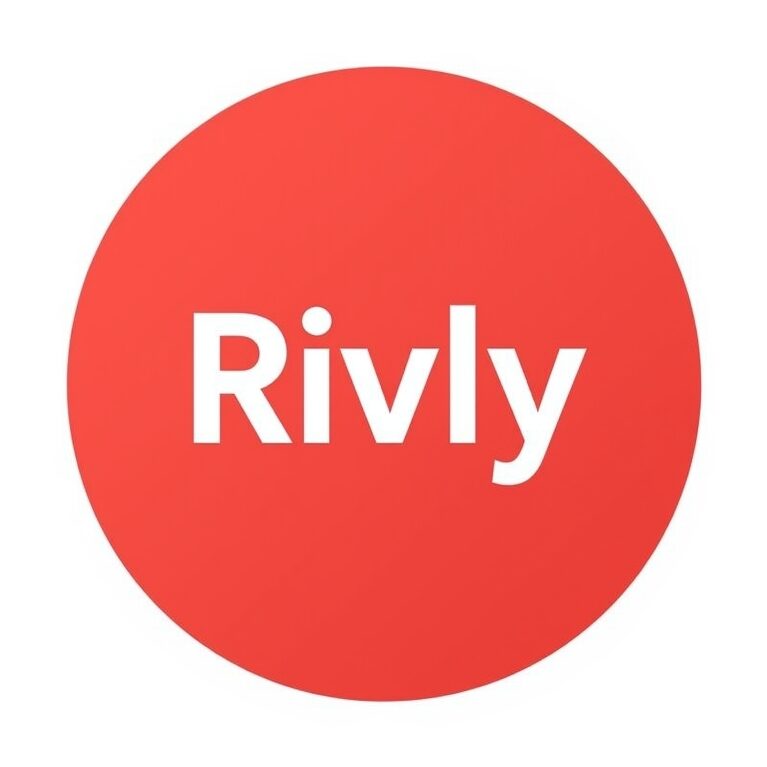Are you ready to create a fitness app that people will love to use every day? Whether you want to help others stay healthy or build a successful business, making a fitness app can be an exciting challenge.
But where do you start? What features should you include to keep users motivated? You’ll discover simple, step-by-step tips to design and develop a fitness app that truly stands out. By the end, you’ll have a clear plan to turn your idea into an app that inspires and supports your users’ fitness goals.
Keep reading to unlock the secrets of building a fitness app that works!

Credit: topflightapps.com
Choosing Your Fitness App Type
Choosing the right type of fitness app is key to your success. Each app type serves a different purpose. Your choice depends on what your users need most. Some want to track workouts. Others focus on eating better. Some seek calm and mental health. Many prefer a mix of all features. Understanding each type helps you build a clear plan. It also improves user experience and satisfaction.
Workout Tracking Apps
Workout tracking apps help users log exercises and progress. They include timers, reps, and sets counters. Some offer video guides for proper form. Many track running, cycling, and other activities. These apps motivate users to stay active daily. They suit users who want clear workout plans. Real-time feedback and goal tracking keep users engaged.
Nutrition And Diet Apps
Nutrition apps focus on food intake and diet habits. Users can log meals and count calories. Many apps offer meal plans and recipes. They help users manage weight and eat healthier. Features like barcode scanners make logging easy. These apps attract users wanting better nutrition habits. Regular updates keep the content fresh and useful.
Meditation And Wellness Apps
Meditation apps support mental health and relaxation. They offer guided meditation and breathing exercises. Users can track mood and stress levels. These apps promote better sleep and focus. They appeal to users seeking calm and balance. Simple interfaces make meditation easy for beginners. Regular reminders encourage daily practice and mindfulness.
Hybrid Fitness Solutions
Hybrid fitness apps combine workouts, nutrition, and wellness. They provide a complete health management tool. Users enjoy tracking fitness and diet in one place. These apps offer personalized plans and tips. They fit users wanting all-in-one solutions. Integration with wearables enhances data accuracy. Hybrid apps boost engagement through variety and convenience.

Credit: www.youtube.com
Market Research And Target Audience
Market research and understanding the target audience are key steps in making a fitness app. These help you create an app that users want to use. Knowing the market and users guides your design and features.
Good research saves time and money. It also helps you find a unique place in a crowded market. Start by studying competitors, then learn what users need. Finally, create clear user profiles to guide your work.
Analyzing Competitors
Look at popular fitness apps. Note what they do well and where they fail. Check their features, user reviews, and design style. See how they engage users and keep them coming back.
Identify gaps in their offerings. Think about what you can do differently or better. This helps your app stand out and attract users.
Identifying User Needs
Ask what users want in a fitness app. Do they need workout plans, diet tracking, or social features? Understand their problems and goals. Simple surveys or interviews can provide clear answers.
Focus on ease of use and real value. Users want an app that fits their lifestyle and helps them stay healthy. Meeting these needs increases app success.
Defining User Personas
Create detailed profiles of your ideal users. Include age, fitness level, habits, and goals. These personas help you design features that match real users.
Use personas to guide decisions about app content and interface. This makes your app more relevant and user-friendly. Personas keep your work focused and effective.
Key Features To Include
Creating a fitness app requires careful planning of its features. These features help users stay motivated and track their progress. Including the right elements can make your app useful and popular.
Focus on user experience and offer tools that support healthy habits. Each feature should be clear and easy to use.
User Profiles And Personalization
User profiles allow people to save their information. This helps the app give personalized advice and workouts. Personalization makes users feel the app fits their needs. It can include age, weight, fitness level, and preferences.
Activity Tracking And Analytics
Track activities like walking, running, or cycling. Show simple data such as steps, distance, and calories burned. Analytics help users understand their habits and progress. Clear charts and summaries keep users informed and motivated.
Goal Setting And Progress Monitoring
Let users set fitness goals like weight loss or strength building. Show progress with easy-to-read updates. Progress monitoring helps users stay focused and celebrate small wins. Goals should be realistic and adjustable.
Social Sharing And Community
Allow users to share achievements with friends or social media. A community feature encourages support and friendly competition. This keeps users engaged and motivated over time. Group challenges or leaderboards work well.
Integration With Wearables
Connect with popular devices like smartwatches and fitness bands. Wearables provide accurate data and improve tracking. This integration offers a seamless experience for users. It also adds value by syncing real-time health metrics.
Designing An Intuitive User Interface
Designing an intuitive user interface is key to a successful fitness app. It helps users find what they need quickly. It keeps them motivated to use the app daily. Good design makes the app feel easy and enjoyable.
Focus on clarity and simplicity. Avoid clutter and confusing layouts. The interface should guide users naturally through the app’s features. This makes the experience smooth and frustration-free.
Simplifying Navigation
Navigation should be clear and simple. Use familiar icons and buttons. Place important features where users can find them fast. Limit the number of menu items to avoid confusion.
Use a bottom menu or a side drawer for easy access. Allow users to return to the home screen with one tap. Clear labels help users understand where each link goes.
Visual Appeal And Branding
Choose colors that match your brand and feel fresh. Use consistent fonts and styles throughout the app. Clean, bright visuals keep users engaged and motivated.
Balance images and text well. Avoid too many colors or fonts. This helps users focus on content and actions, not on distractions.
Accessibility Considerations
Design for all users, including those with disabilities. Use readable font sizes and high contrast colors. Add text labels for icons and buttons.
Support voice commands and screen readers. Make touch targets large enough for easy tapping. Accessibility improves user satisfaction and app reach.
Choosing The Right Technology Stack
Choosing the right technology stack is crucial for building a fitness app. It affects app performance, user experience, and future updates. The stack includes platforms, backend, and integrations. Each part must work well together.
Picking the right tools helps create a smooth and fast app. It also saves time and money during development. Let’s explore the main technology choices for a fitness app.
Mobile Platforms: Ios Vs Android
Decide which platform to target first. iOS and Android have different user bases and development needs. iOS apps use Swift or Objective-C, while Android apps use Java or Kotlin.
iOS users often spend more on apps. Android has a larger global audience. Choose based on your target market and budget. Cross-platform tools like React Native or Flutter can build apps for both platforms.
Backend Development Options
The backend handles data storage, user accounts, and app logic. Common backend languages include Node.js, Python, and Ruby. Each offers speed and scalability.
Choose a framework that fits your team’s skills. Cloud services like AWS, Google Cloud, or Azure provide reliable hosting and databases. A strong backend ensures smooth app performance and secure data.
Apis And Third-party Integrations
Fitness apps often need extra features like activity tracking, nutrition info, or payment gateways. APIs connect your app with these services. Popular APIs include Google Fit, Apple HealthKit, and Stripe.
Choose APIs that match your app’s goals and user needs. Integrations save development time and offer trusted features. Always check API documentation and support quality before integration.
Development Process And Best Practices
The development process for a fitness app requires clear planning and careful execution. Following best practices ensures the app is reliable, user-friendly, and meets user needs. This process involves several steps, from initial design to testing, each vital for success.
Efficient development saves time and reduces errors. Developers must keep the user experience simple and engaging. Using the right methods helps create a strong app foundation.
Agile Methodology
Agile methodology breaks the project into small, manageable parts. Teams work in short cycles called sprints. Each sprint delivers a functional part of the app. This method allows quick changes based on feedback.
Regular meetings keep the team aligned. Agile promotes collaboration between developers and stakeholders. It helps catch issues early and improves the app step by step.
Prototyping And Mvp Development
Prototyping creates a simple version of the app design. It shows the app’s look and basic functions. This step helps gather user feedback before full development.
The Minimum Viable Product (MVP) focuses on core features only. Launching an MVP tests the app idea quickly. It saves time and money by avoiding unnecessary features.
Users try the MVP and suggest improvements. Developers then add features based on real user needs.
Testing And Quality Assurance
Testing finds bugs and ensures the app works well. It covers different devices and operating systems. Quality assurance checks if the app meets set standards.
Manual and automated tests improve app stability. Regular testing during development prevents major problems. A smooth, error-free app keeps users happy and engaged.
Monetization Strategies
Monetization strategies help turn a fitness app into a source of income. Choosing the right approach affects user growth and revenue. These strategies must balance value and cost for users. The goal is to offer features users want while earning money fairly. Below are common methods to monetize a fitness app.
Freemium Model
The freemium model offers a free app version with basic features. Users try the app without paying. Advanced features stay locked behind a paywall. This model attracts many users fast. It lets users decide if they want to pay later. Free access builds trust and shows app benefits.
Subscription Plans
Subscription plans charge users regularly for full access. Monthly or yearly payments unlock premium content. This model provides steady income for app developers. Users benefit from constant updates and exclusive workouts. Clear plan tiers help users choose what fits their needs. Subscriptions build loyal user communities over time.
In-app Purchases And Ads
In-app purchases let users buy extra features or items inside the app. Options include personalized coaching or meal plans. Ads display ads to free users and earn money per view. Combining ads with purchases balances user experience and revenue. Careful ad placement avoids annoying users. This mix offers flexible income streams for the app.
Marketing And User Acquisition
Marketing and user acquisition are key to the success of any fitness app. Without users, even the best app fails. A clear marketing plan helps reach the right audience. It also builds trust and encourages downloads. Focus on strategies that bring real users who will keep using the app.
Start with simple, effective methods. Use the app store, social media, and trusted voices. These channels create awareness and interest. Let’s explore three main ways to attract users and grow your fitness app.
App Store Optimization
App Store Optimization (ASO) improves your app’s visibility. Use keywords that users type when searching for fitness apps. Write a clear, short app description. Highlight main features and benefits. Add high-quality screenshots and videos. These elements show what your app does. Positive user reviews also boost rankings. Regularly update the app to fix bugs and add features. This keeps the app fresh and appealing.
Social Media Campaigns
Create social media posts that catch attention. Use simple images and short videos. Share tips, workouts, and user stories. Run small ads targeting people interested in fitness. Post regularly to keep your audience engaged. Ask followers to share their progress using your app. This builds a community around your product. Social media is a powerful tool to spread the word fast.
Influencer Partnerships
Partner with fitness influencers who match your app’s style. They can introduce your app to their followers. Choose influencers with real engagement, not just follower count. Let them use the app and share honest reviews. Influencers can create tutorials, challenges, or giveaways. Their trust helps attract users who want similar results. This method connects your app to a wider, active audience.
Maintaining And Updating Your App
Maintaining and updating your fitness app keeps it useful and safe for users. Regular care helps fix bugs and improve performance. Updates also allow you to add new features that users want.
Keeping your app fresh encourages users to stay active and engaged. It shows that you care about their experience and health goals. A well-maintained app builds trust and keeps users coming back.
Gathering User Feedback
Collect feedback through surveys or app reviews. Listen to what users like and dislike. Use their opinions to find problems and ideas for improvement. Respond to feedback quickly to show users you care.
Encourage users to share their thoughts regularly. This keeps your app aligned with their needs and wishes. User feedback guides your updates and helps avoid unnecessary changes.
Implementing New Features
Add features that improve user experience or add value. Focus on simple, useful tools like workout tracking or nutrition tips. Test new features carefully before launching them to all users.
Prioritize features that solve common problems or add fun elements. Keep the app easy to use and avoid clutter. Regularly updating features keeps the app relevant and engaging.
Ensuring Security And Compliance
Protect user data with strong security measures. Use encryption to keep information safe from hackers. Follow laws about user privacy and data protection.
Update your app to fix security gaps quickly. Inform users about privacy policies clearly. A secure app builds trust and protects your reputation.

Credit: riseapps.co
Frequently Asked Questions
What Features Should A Fitness App Include?
A fitness app should include workout tracking, goal setting, progress monitoring, nutrition logging, and social sharing. These features engage users and promote consistent exercise habits.
How Much Does It Cost To Develop A Fitness App?
Developing a fitness app typically costs between $20,000 and $100,000. The price varies based on features, platform, design, and development time.
Which Technology Is Best For Fitness App Development?
React Native and Flutter are popular for fitness apps. They enable cross-platform development, faster time-to-market, and cost efficiency without sacrificing performance.
How To Ensure User Engagement In A Fitness App?
Incorporate gamification, personalized workouts, push notifications, and social challenges. These elements motivate users and improve app retention rates.
Conclusion
Creating a fitness app takes clear goals and simple design. Focus on user needs and easy navigation. Test your app often to fix any problems quickly. Add features that help users stay motivated daily. Keep updating the app with new content and improvements.
This keeps users engaged and coming back. A good fitness app supports healthy habits and progress. Start small, learn from feedback, and grow step by step. Your app can help many people live healthier lives.
